Physiologically-Based Pharmacokinetic Modeling in Pregnancy, Lactation, and in Neonates: Achievements, Challenges and Future Directions
A special issue of Pharmaceutics (ISSN 1999-4923). This special issue belongs to the section "Pharmacokinetics and Pharmacodynamics".
Deadline for manuscript submissions: closed (29 February 2024) | Viewed by 18345
Special Issue Editors
Interests: PBPK; pregnancy; lactation; maternal–fetal; neonates
Interests: perinatal pharmacology; neonatal clinical pharmacology; PBPK in special populations; newborn; infant; lactation
Special Issues, Collections and Topics in MDPI journals
Interests: obstetric pharmacology; pediatric pharmacology; PBPK; pharmacometrics; maternal-fetal; special populations; translational informatics
Special Issue Information
Dear Colleagues,
Obstetric patients represent a special population in drug therapy. During pregnancy and in the postpartum period, various anatomical and physiological changes give rise to altered drug pharmacokinetics in both the mother and fetus or neonate, yet pregnant and lactating women and their infants are underrepresented in clinical trials, leading to a dearth of in-depth information on the drug pharmacokinetics in these populations. Consequently, dosing regimens are often simply extrapolated from non-pregnant to pregnant women or allometrically scaled from adults to neonates, entailing in both cases considerable risks of sub-therapeutic or toxic drug effects for the mother, fetus, and/or neonate.
In recent years, tremendous efforts have been directed towards investigating drug pharmacokinetics in obstetric populations or infants through various approaches, including physiologically based pharmacokinetic (PBPK) models. This reflects an increased awareness of the necessity to better understand clinical pharmacology and ultimately improve pharmacotherapy in this vulnerable patient population.
The goal of this Special Issue is to showcase strong examples of a successful application of PBPK modeling approaches in the obstetric population as well as to present the status quo and an outlook on future perspectives of this technology in the field of obstetric pharmacology.
We invite articles on all aspects of PBPK modeling in pregnant, lactating, or neonatal populations for this Special Issue.
Dr. André Dallmann
Prof. Dr. Karel Allegaert
Dr. Sara Quinney
Guest Editors
Manuscript Submission Information
Manuscripts should be submitted online at www.mdpi.com by registering and logging in to this website. Once you are registered, click here to go to the submission form. Manuscripts can be submitted until the deadline. All submissions that pass pre-check are peer-reviewed. Accepted papers will be published continuously in the journal (as soon as accepted) and will be listed together on the special issue website. Research articles, review articles as well as short communications are invited. For planned papers, a title and short abstract (about 100 words) can be sent to the Editorial Office for announcement on this website.
Submitted manuscripts should not have been published previously, nor be under consideration for publication elsewhere (except conference proceedings papers). All manuscripts are thoroughly refereed through a single-blind peer-review process. A guide for authors and other relevant information for submission of manuscripts is available on the Instructions for Authors page. Pharmaceutics is an international peer-reviewed open access monthly journal published by MDPI.
Please visit the Instructions for Authors page before submitting a manuscript. The Article Processing Charge (APC) for publication in this open access journal is 2900 CHF (Swiss Francs). Submitted papers should be well formatted and use good English. Authors may use MDPI's English editing service prior to publication or during author revisions.
Keywords
- PBPK modeling
- modeling and simulation
- pharmacokinetics
- pregnancy
- maternal–fetal
- lactation
- neonates
- infants







